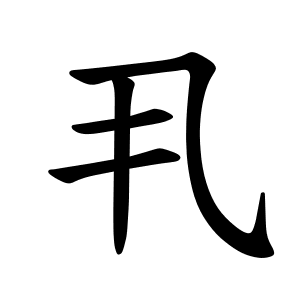丮
- to grasp, to hold, to seize;
Etymology
An ideogram:
The character depicts a hand grasping a stick or rod-like object. The upper vertical line represents a pole or staff, and the strokes beneath suggest a hand closing around it.
Semantic range:
- to hold in the hand;
- to seize, to grasp firmly;
- by extension, to control or keep in possession.
Usage in Korean
Rarely used in modern Chinese, but appears in early script forms and etymological works.
Survives mainly as a component in later characters.
Additional notes
In early Chinese texts, “grasping” (丮) symbolized active control or possession—not merely physical holding, but also the idea of taking hold of one’s fate, responsibilities, or authority. Many derivative characters that include 丮 convey notions of manipulation, control, or possession.
